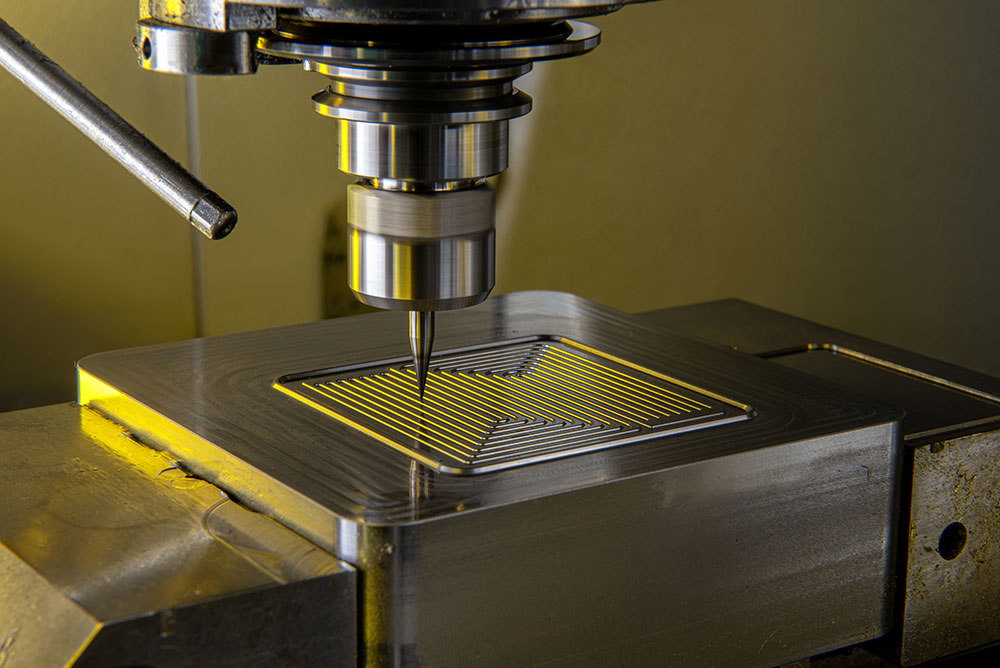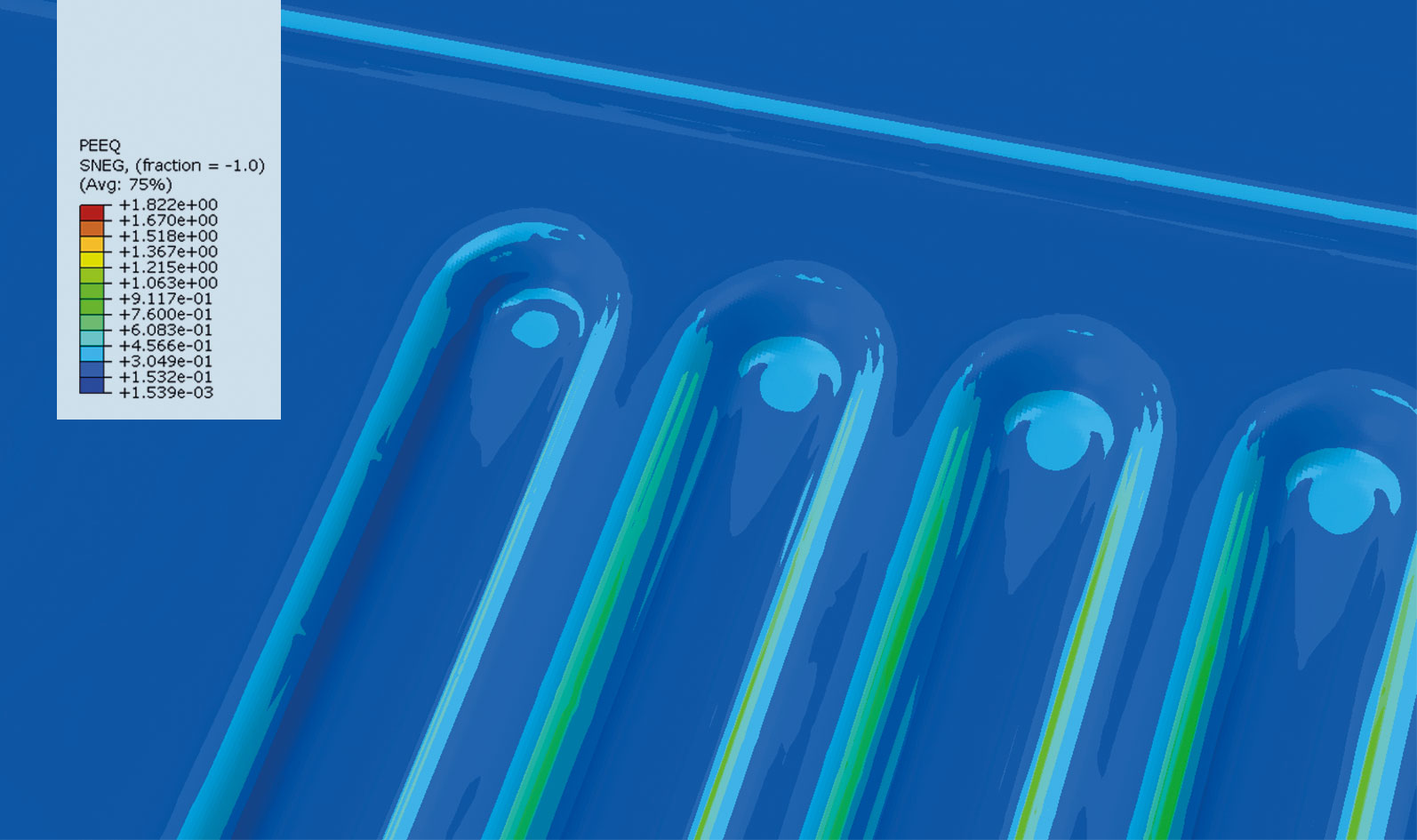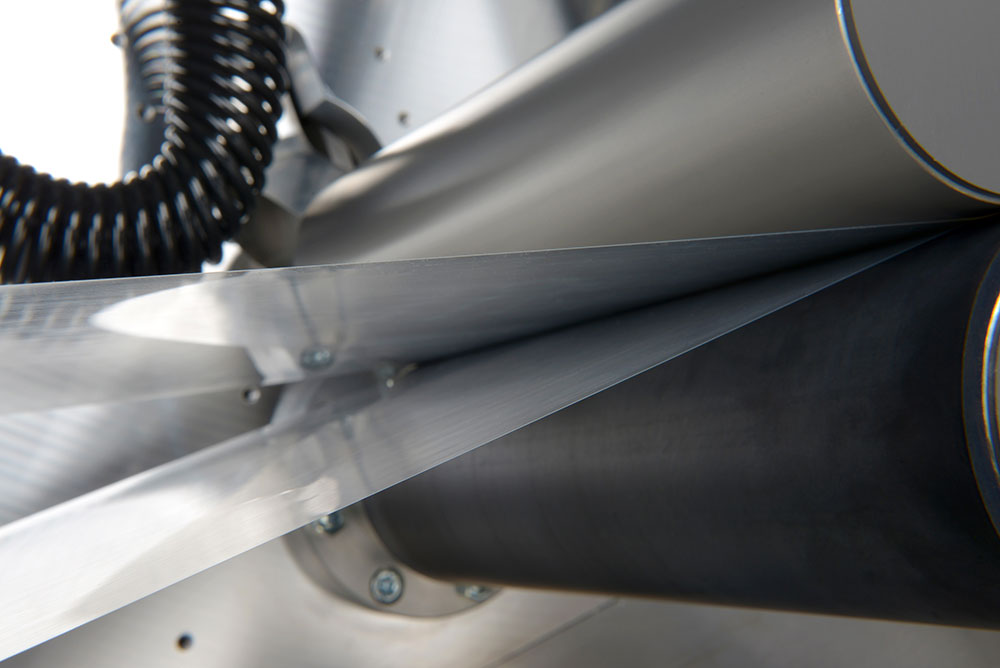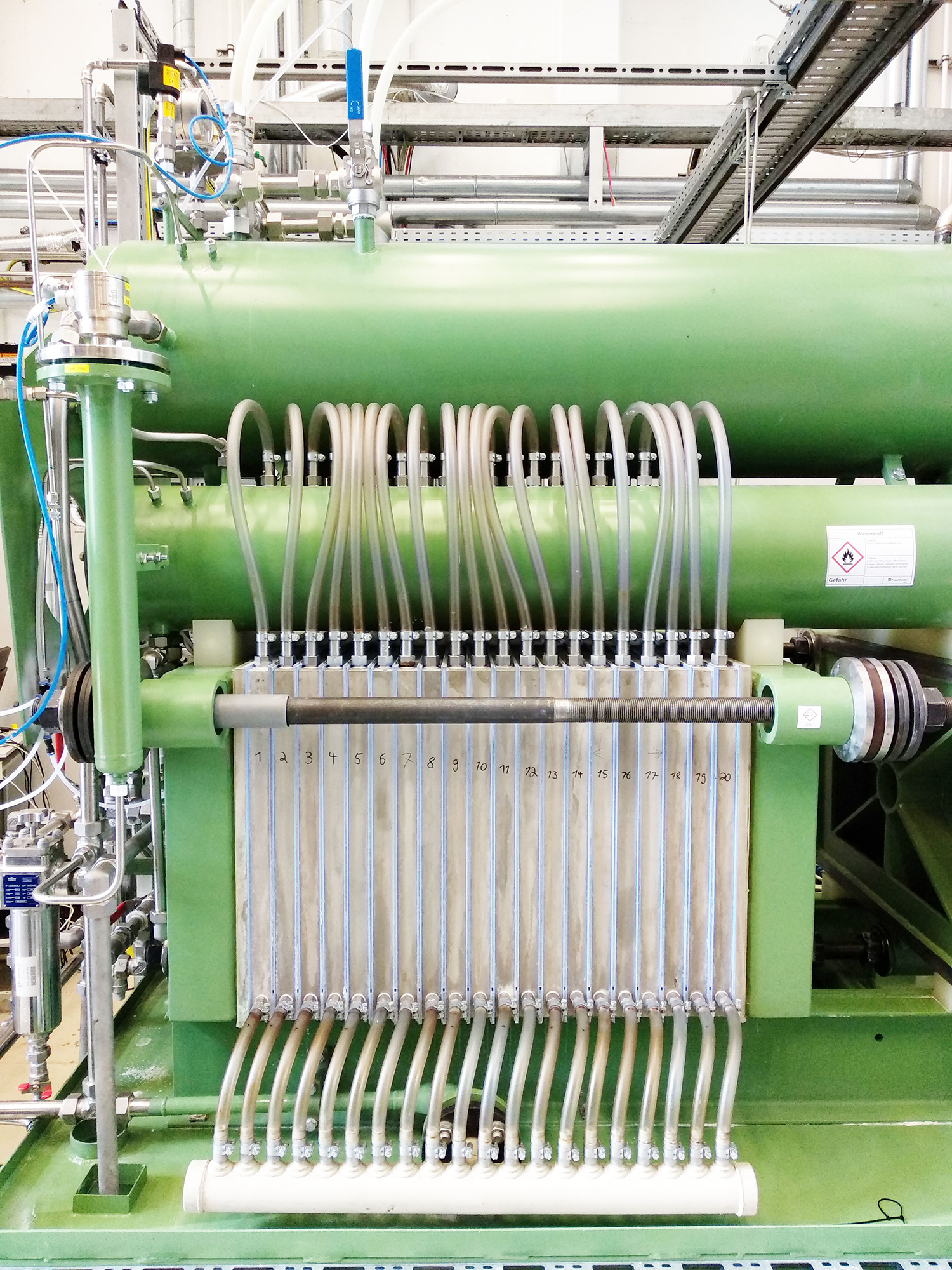Automated production of individual components
In order to automate the production of electrolyzers and fuel cells, it is necessary not only to optimize the process as a whole but also to adjust individual aspects of it – i.e., to upscale the production of individual components. This includes the electrodes for electrolyzers and fuel cells. Fraunhofer IFAM has developed a fast process for coating these electrodes, whereby the catalyst is either sprayed or printed onto a metallic substrate. This is followed by a heat treatment, which improves stability. This process has a technology readiness level of seven – i.e., it is still at the testing stage. In two to four years, however, it ought to be ready for industrial use. Meanwhile, Fraunhofer IPT has built a development environment to enable the swift transfer of roll-to-roll production processes for the membrane-electrode unit from the lab scale to continuous production. This development environment is suitable for membrane-electrode units for both fuel cells and electrolyzers.
Fraunhofer IWU is working to establish a robust and automated process for the production of metallic bipolar plates. The sheet metal for these plates is extremely thin and therefore prone to cracks or other defects. Researchers are developing, comparing and enhancing methods for the mass production of bipolar plates by means of new forming processes that help conserve resources. For example, they are currently investigating the advantages of an embossing process on behalf of a customer from industry. And, in another project, they are working to enhance the use of a roll-to-roll embossing process. This is used for entire rolls of material, rather than individual sheets of metal, and thereby enables high volumes. If, on the other hand, the objective is to achieve extremely precise and intricate patterns at a lower output – as with a variable design – hydroforming is the preferred process. Here, a semifinished sheet metal product is pressed into a die by pumping an active medium at high pressure to the reverse side of the semifinished product. A team from Fraunhofer IWU is also looking at a high-speed forming process with active media. In this case, a tool strikes the active medium at high speed, thereby creating a pressure wave that presses the sheet into the desired shape.
This high-speed process can be used to create special shapes in a wide variety of materials. Once the bipolar plates have been produced, they must then be joined together. Fraunhofer experts are seeking to bring this process step closer to the forming process. If, for example, laser welding is used to join the plates, this process can be directly integrated in the roll-to-roll embossing process, thereby enabling high volumes.
Fraunhofer UMSICHT is currently working on flexible polymer bipolar plates. These can be firmly bonded together or with other components. They are also highly flexible and therefore facilitate entirely new designs for PEM fuel cells. On this basis, stack construction should become simpler, safer and cheaper. Fraunhofer Umsicht is now working with a partner from industry to take this production process for bipolar plates from the lab stage to a full-scale industrial roll-to-roll process.
Another challenge facing engineers is the production of hydrogen tanks. As a rule, hydrogen tanks for mobile applications comprise materials that contain thermosetting plastics. However, such materials can at best only be shredded but not recycled. Fraunhofer IPT has therefore switched to thermoplastics: the liner – a hydrogen-proof tank – is wrapped in sections of carbon fiber embedded in a thermoplastic matrix and bonded together thermally. By reversing this process, these materials can then be recycled: the sections are simply separated by means of heat. Researchers are now working on a suitable production process.
Production engineering services
Fraunhofer Institutes with expertise in production engineering are available to advise customers on general aspects of mass production for all these systems and components. Areas of interest here include in-line quality assurance, production reliability and component handling. Quality control is essential in process automation. Researchers from Fraunhofer IWU are therefore developing a measuring and control concept for fuel cell systems. In a first step, they are linking the process parameters in a simulation model and identifying the requisite sensor specifications.
Digitalization has a key role to play in the automation of production and manufacturing processes. In the field of hydrogen technology, however, both automation and digitalization are still very much in their infancy. Teams from Fraunhofer IPA are therefore investigating which processes from branches of industry with a greater degree of digitalization might be transferred for use in conjunction with hydrogen technology.
Higher volumes, larger dimensions and bigger capacity
The priority for fuel cells is mass production. In the case of stationary applications, this throws up a further challenge: in addition to producing large volumes of components, it is also necessary to ensure that these work together smoothly in the larger dimensions required. For this purpose, Fraunhofer has joined forces with Siemens to set up a joint test and research platform, with funding from the State of Saxony. Researchers at the Hydrogen Laboratory Görlitz will investigate innovative solutions for the use and storage of hydrogen along the entire length of the power-to-hydrogen-to-power chain. The objective here is to establish a national testing and certification center for hydrogen and hydrogen-storage systems in close collaboration with the Fraunhofer electrolysis platform in Leuna. Work will focus on the testing and validating of industrial-scale systems for electrolysis, the storage and transport of hydrogen, and its ultimate conversion back into power via fuel cell or gas turbine. Fraunhofer IWU and Fraunhofer IMWS are coordinating an interdisciplinary approach that covers product innovation, material diagnostics, system diagnostics and the development of certification standards. In addition, the two Fraunhofer Institutes are to team up with regional partners in order to develop ideas for using the hydrogen that is produced in the test bed.



